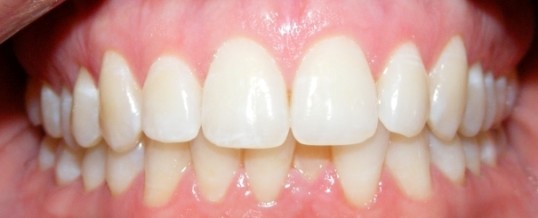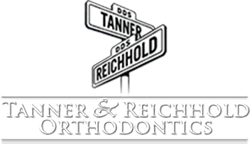
My upper teeth look great and I like my smile! However, my lower teeth are crooked and people tend to notice them when I’m talking. They seem to be getting worse as I get older too. Can’t I just get braces on my lower teeth and put them back where they used to be?
Doing orthodontic treatment in one arch is possible, but it has to be under the right circumstances. What determines this is the relationship between the lower and the upper teeth. This is commonly referred to as “one’s bite”. The way the upper and lower teeth fit along the sides, the amount of crowding in each arch, the depth of the bite in the front (overbite) and the horizontal distance between the upper and lower front teeth (overjet) all figure in to the decision.
There are two main factors that orthodontists consider when determining how to treat a patient: esthetics (basically straightening the teeth) and function (making the upper and lower teeth fit so that one can chew properly). Straightening the teeth is relatively easy. Making them fit is often where the challenge comes in.
When crooked or overlapping teeth are straightened with braces, they move forward. If you have an overbite before treatment, aligning the crooked bottom teeth will improve it. If your front teeth come together in an edge-to-edge or an underbite relationship at the start of treatment, treating the lower teeth may actually make matters worse. As the lower teeth move forward, the front teeth may not come together at all after treatment. Although the teeth may look straighter, the bite may be worse and the function has been compromised.
One of the most common reasons the teeth get crooked with age is the deepening of the bite. As the backs of the upper teeth “push down” on the lower front teeth, they tend to push them back making them overlap. In these cases there is usually no clearance between the backs of the upper teeth and the fronts of the lowers. Without clearance, it is nearly impossible to realign the lower front teeth without repositioning the uppers too. Space between the upper and lower teeth is necessary because the lower teeth will move forward as they are straightened.
One option that can be considered as an alternative to full upper and lower braces in the case of lower crowding is disking between the lower front teeth. It is also known as interproximal reduction (IPR) or slenderizing. Orthodontists use thin diamond disks or files to polish away small amounts of enamel from the sides of the crooked teeth providing the room needed for their alignment. Teeth altered in this way don’t need to move forward as they are aligned.
In more severe cases of lower crowding, the removal of a single front tooth may be considered. This is an attractive option if one of the lower teeth is badly worn or there are problems with the overlying gums or bone. A good example of this is where a single lower incisor has been pushed forward relative to the other lower incisors. Eliminating a tooth that has lost its support can actually be a blessing if keeping it will require extensive gum grafting and aggressive slenderizing of perfectly normal teeth.
By Dr. Gary Reichhold
FEB

About the Author:
Dr. Gary Reichhold and his partner Dr. Stephen Tanner have been proudly serving families in Concord, Walnut Creek, Clayton, Pleasant Hill and the surrounding communities for over 20 years. Their office is conveniently located in central Contra Costa County and their experienced team is committed to providing you and your family with exceptional orthodontic care.